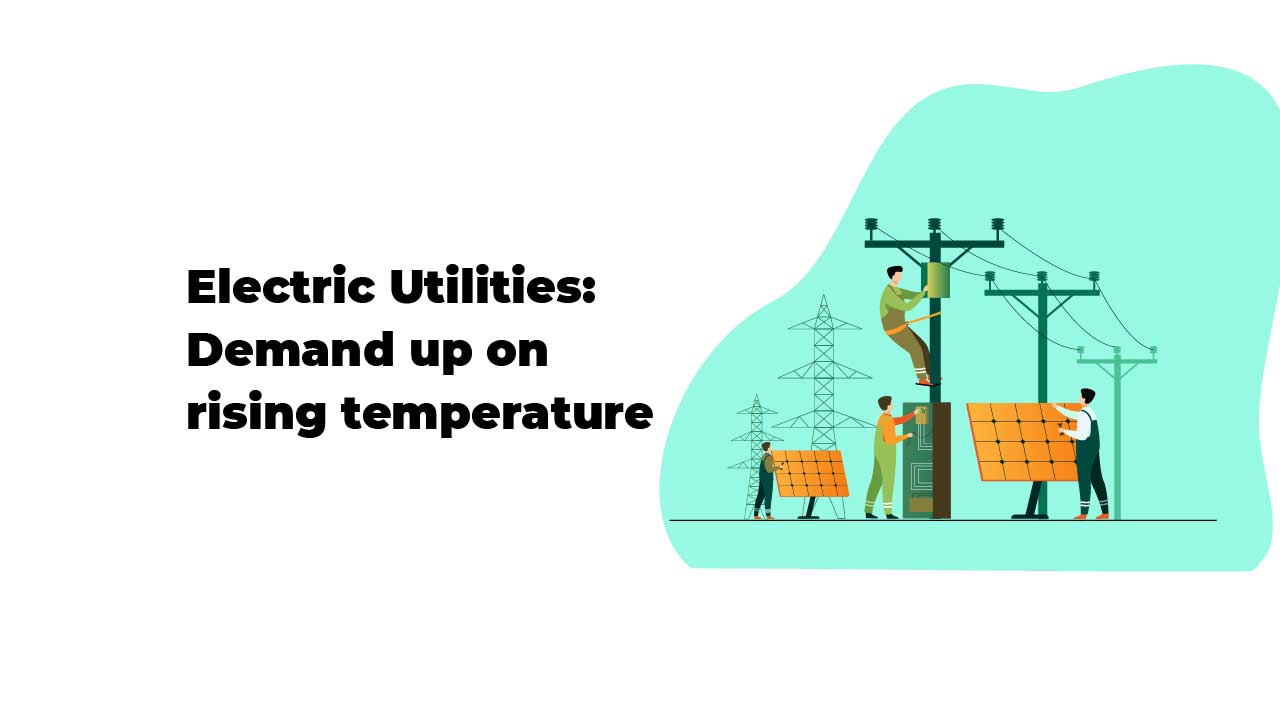Electric Utilities: Demand up on rising temperature

Last Updated: 9th December 2022 - 09:36 am
India’s power generation in the first 15 days of April 2022 showed a growth of 9.5% YoY at 4.53 BU per day. The increase in demand is due to an increase in temperatures leading to the Ministry of Earth Sciences declaring a heat-wave status in several states, and an increase in economic activity in a post-Covid era.
India's power minister has told states to step up coal imports for the next three years.
Start Investing in 5 mins*
Get Benefits worth Rs. 5100 | Rs. 20 Flat Per Order | 0% Brokerage
The move was contrary to a long-standing national objective to buy less coal from abroad but was widely seen as a temporary measure to address shortfalls amid rising power demand caused by soaring temperatures and a pickup in industrial activity.
The decision to boost imports for so long underscores the severity of India's fuel crisis. Indian utilities' coal inventories are at the lowest pre-summer levels in at least nine years and electricity demand is seen rising at the fastest pace in at least 38 years.
India imported 160.84 million tonnes of coal between April and December 2021, down 13.8% on a year earlier.
The data towards increased penetration as well as sales of air-conditioners among other home appliances in India have likely aided the increase in domestic power consumption. The increasing divergence in the demand profile based on the time of day as well as seasonality appears to be compounding the supply constraint.
The growth in demand at 3% CAGR on a 3-year CAGR basis does not point to as strong a demand trend and would concede that improving energy efficiency would likely cap the growth of power demand lower than the underlying growth in the economy.
The current deficit scenario is likely an outcome of sub-par generation from capacities dependent on imported coal/gas (average PLF of 19% in past three months), moderated capacity addition over the past few years (14 GW average in past three years) that has been concentrated in the renewable space unlike the addition of primarily coal-based capacities prior to FY2017.
India currently has another 53 GW of coal-based capacities under construction, of which 43% are from the private sector and do not have visibility on completion timelines. Amongst the listed players, NTPC is the only one with coal-based capacities under construction while most have large plans for renewable capacity additions. The competitive storage cost that allows renewable-based generation to provide round-the-clock power is key for renewables to substitute more comprehensively coal-based capacities.
The Coal-based capacities currently operate at 59% PLF—an improvement over the 54% PLF in FY2021. Energy deficit numbers aren’t too alarming as well, suggesting that the current demand-supply mismatch could be bridged once capacities based on imported coal are brought back in supply.
Elevated price of imported coal augurs well for Tata Power—through higher earnings from Indonesian mines while losses at Mundra are capped, Coal India—on account of higher demand for domestic coal and better e-auction prices, Indian Energy Exchange—due to increased demand-supply mismatch that will drive volumes on the exchange.
Average power demand in India has inched up gradually over the years and is likely to continue its trajectory Monthly power demand in India, March fiscal year-ends, 2015-2022.
- Performance Analysis
- Nifty Predictions
- Market Trends
- Insights on Market
Trending on 5paisa
Market Outlook Related Articles
Disclaimer: Investment in securities market are subject to market risks, read all the related documents carefully before investing. For detailed disclaimer please Click here.
 5paisa Research Team
5paisa Research Team
 Sachin Gupta
Sachin Gupta




